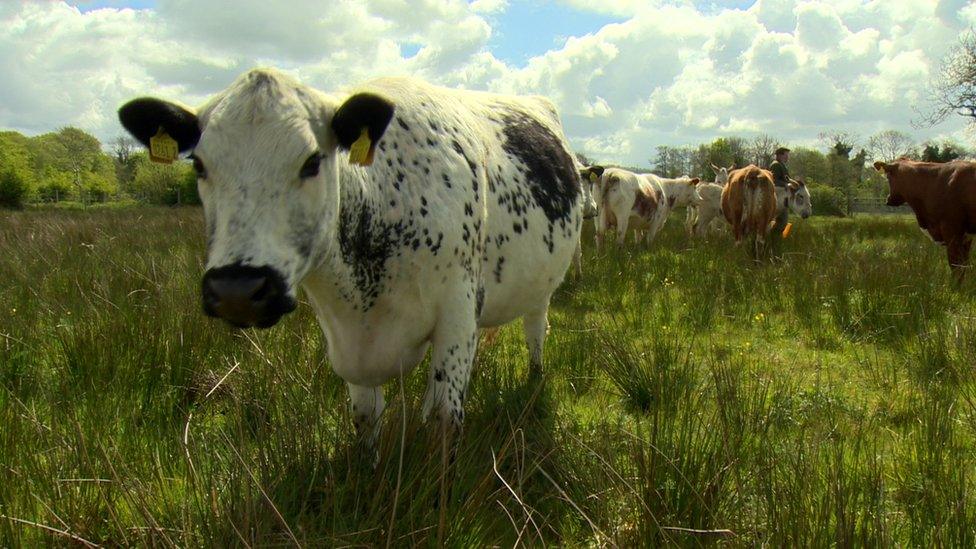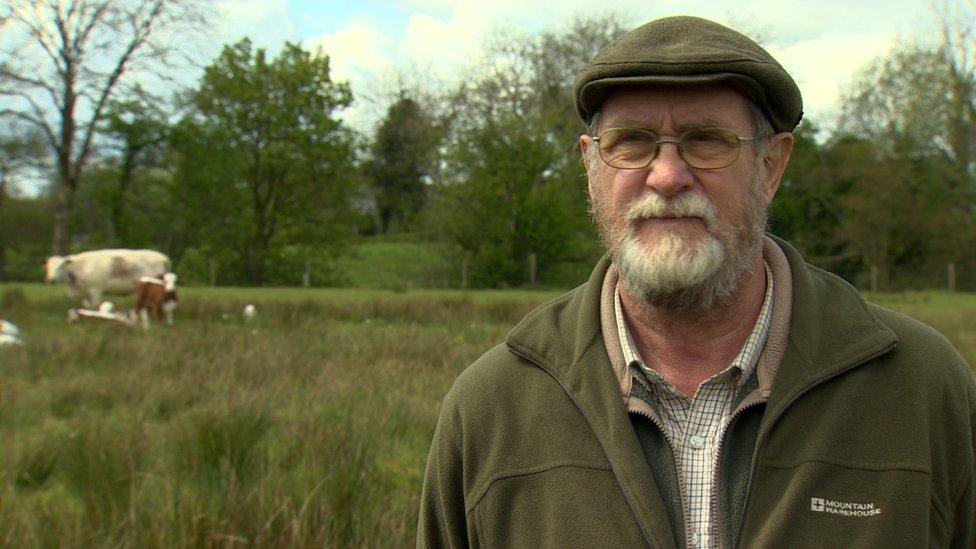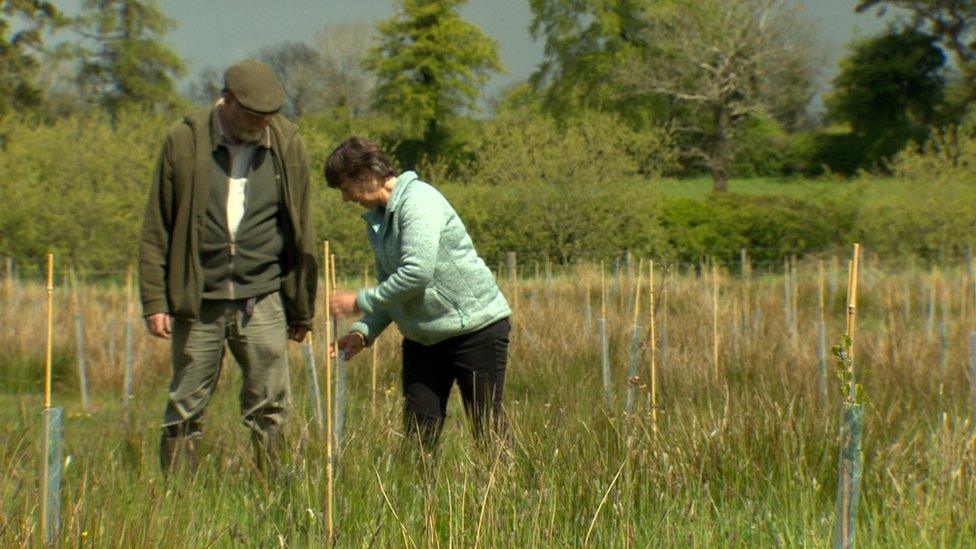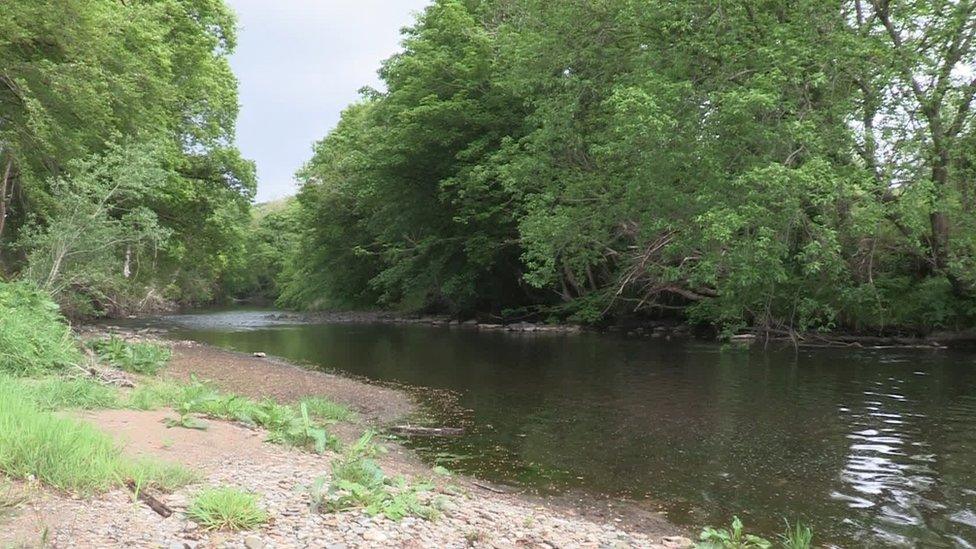Lough Neagh farmers band together to improve environment
- Published

Native cattle breeds are being used by the farmers
Almost 150 farmers have banded together to improve water quality and wildlife habitat on the shore and along rivers which flow into Lough Neagh.
They have fenced off rivers, planted trees and are using specialist breeds of native cattle.
As a result of two big conservation schemes more than 600 hectares of wet grassland are now being managed for breeding waders like curlew.
Some 190km (118 miles) of watercourses have been fenced off.
This protects them from cattle which can adversely affect water quality.
The work has been going on for three years and between them the farmers have drawn down £4m in environmental payments on top of their subsidies.

A river runs through it - the River Crumlin sustains populations of trout and eels
Michael Meharg farms near Dundrod. The Crumlin River, which flows through his land, runs into the lough.
He has fenced off almost 5km (3.1 miles) of river and field drains, and planted flowering trees along field boundaries to provide food for pollinators.
The farm is home to Irish hares and the rare Cryptic Wood White butterfly.
The river sustains populations of trout and eels. Birds like the dipper and heron live there and otters have been spotted.
The environmental payments are made under what's called the Environmental Farming Scheme.

Michael Meharg helps the Lough Neagh Partnership manage the project, persuading other farmers to join in
There has been some criticism that it is overly bureaucratic but Mr Meharg believes it is worth the effort.
"Everybody has got to see that there's nowt for nowt.
"If we're going to accept payments for our farm then I think we have a responsibility to ensure that that money is being put to purpose and that it's justified."
He helps the Lough Neagh Partnership manage the project, persuading other farmers to join in.
Gerry Darby, of the partnership, says having a farmer talk to fellow farmers about it is critical to getting buy-in.
Scheme participants get support to deal with the form filling and have earned on average up to £600 per hectare in payments.
"It's about saying to them yes, there are environmental benefits but there's also real financial benefits to taking part," he says.
Judy Meharg, who is married to Michael, is a partner in the farm business.

Judy Meharg refers to the little trees as her babies
She has planted out one of the fields with 2,000 native trees.
"It was a really life-affirming experience to plant it. We got some friends in and really enjoyed doing the work.
"Hopefully in the years to come it will bring lots of wildlife benefit and of course there's the value in terms of carbon sequestration will be really good," she says.
"They're just my babies, these little trees," she adds.

The couple will manage the new woodland
As well as adding to tree numbers and providing habitat and cover for wildlife, Judy hopes the wood can provide an income through careful management in the years ahead.
Planted under a government incentive scheme, the couple also keep their right to subsidy payments for the field, as well as an income for managing the new woodland.
Related topics
- Published30 January 2019

- Published20 December 2019
